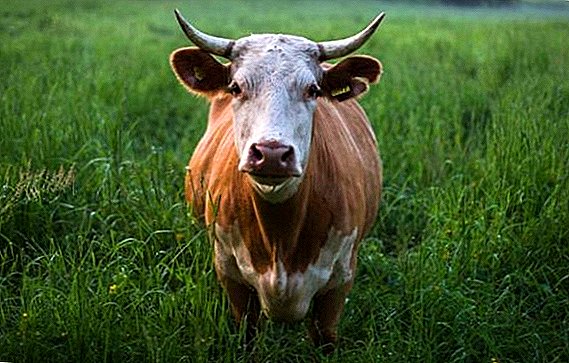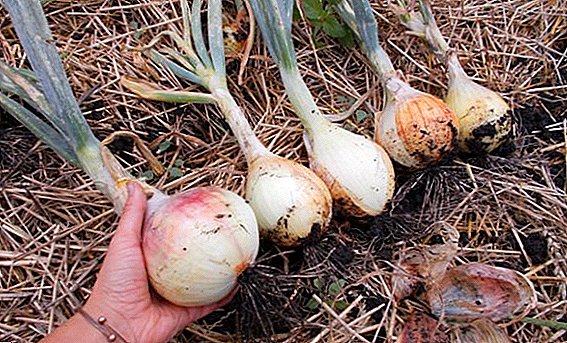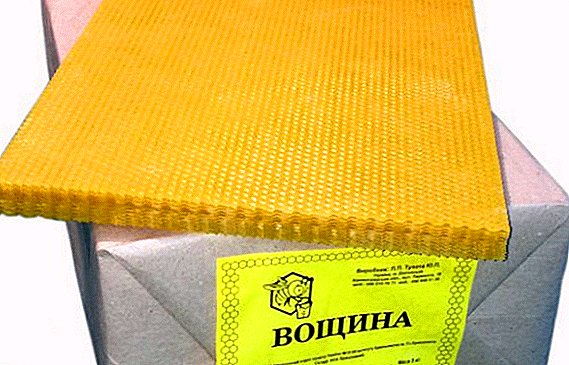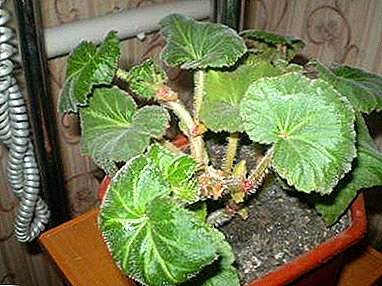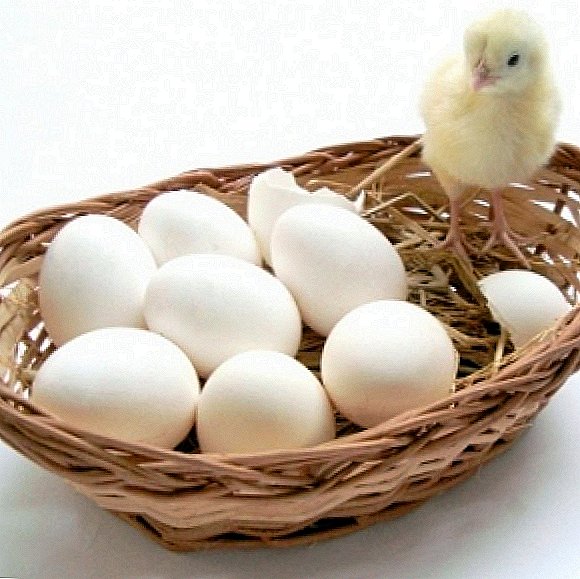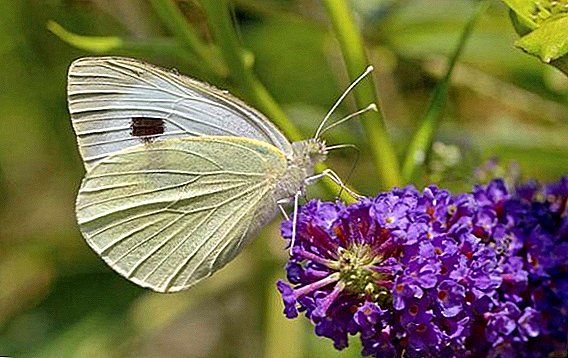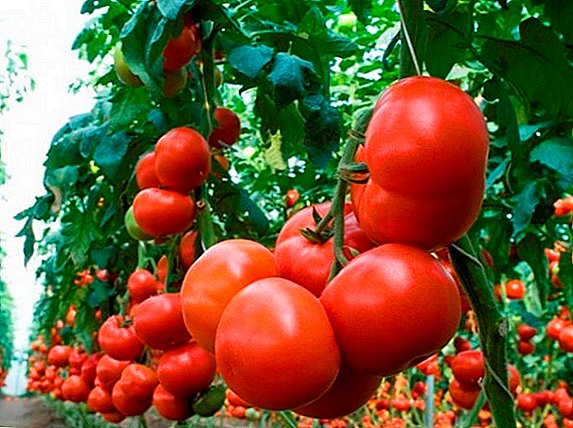 Every year, breeders create new varieties of tomatoes that have improved properties, taste, and are also better protected from various diseases and pests. Such a large selection of seed allows us to find the perfect option for our climate and growing conditions. Today we will understand what is a new tomato "Makhitos f1", set out a detailed description, and also tell you how to grow this hybrid to get the maximum yield.
Every year, breeders create new varieties of tomatoes that have improved properties, taste, and are also better protected from various diseases and pests. Such a large selection of seed allows us to find the perfect option for our climate and growing conditions. Today we will understand what is a new tomato "Makhitos f1", set out a detailed description, and also tell you how to grow this hybrid to get the maximum yield.
Appearance and description of the variety
Before discussing the agrotechnical cultivation of the Makhitos f1 tomato, consider its characteristics. We find out the difference between the fruits and the aboveground part.

Before us is an indeterminate plant that grows up to 200 cm in height. The hybrid belongs to mid-season high-yielding tomatoes. It was developed in Holland, however, it was tested in other climatic zones and showed good results. The leafiness is rather strong, the leafy plates are painted in dark green color and have a standard shape for tomatoes.
Fruit Characteristic
Fruits are painted in bright red glossy color, have a rounded shape, but slightly flattened from the poles. In the area of attachment of the stem to the fruit, a small depression can be observed.
Tomatoes "Makhitos f1" have a very high yield. 7-8 kg of high-quality fruits are collected from one square.
As for weight, tomatoes ripen very large, about 220-250 g. If ideal conditions were created during cultivation, then you can get giants that weigh up to 500 g.
Since we have a hybrid that, most often, is grown in greenhouse conditions, the taste can not be pronounced, but the variety allows you to get the most delicious tomatoes. It is also worth noting that tomatoes have a pronounced smell.
Important! Fruits do not crack, long stored and transported without problems.
Variety tomato Makhitos gained popularity due to the fact that with its hybrid bushes you can get 2 crops per year, which seriously increases profits when using fruits for sale.

The advantages and disadvantages of the variety
Minuses:
- at high temperatures begins the mass fall of peduncles;
- good germination will only be subject to proper germination;
- sometimes the color is not solid, there may be green spots;
- fully ripened fruits (biological maturity) are poorly transported.
- opportunity to get 2 crops;
- the last fruits are formed very large, reaching 300-400 g;
- excellent product quality;
- universality of use;
- high yield;
- good taste.
Did you know? For 2009 in the Russian Federation more than 1250 varieties and hybrids of tomatoes were zoned, and all over the world there are more than 10 thousand ...
Agrotechnology
After considering the strengths and weaknesses of the Makhitos f1 tomato, we turn to the cultivation technology. Set out in detail the instructions that will help you grow healthy tomatoes, starting with planting and ending with the harvest.

Seed preparation, planting seeds and care for them
Let's start with the fact that seeds require pre-sowing preparation, during which the material is sorted out, excluding spoiled seeds, and also treated with a growth stimulator to get a high percentage of shoots. You can use for germination means Appin or Zircon, or another equivalent, which has positive feedback.
Important! To plant seeds for cultivation in the greenhouse should be at the end of February, in time to get the crop.
After preparing the seeds, we need to "mix" the soil mixture so that it is most suitable for this hybrid. Pay attention to the acidity of the soil. It should be in the range of 6-6.8 pH. At the same time, the substrate should have an optimal amount of macronutrients and humus, so we buy soil at the flower shop, add some sand to it to improve drainage properties, and then add a small amount of complex fertilizer and humus. Next, you need to thoroughly mix the soil mixture, so that the plants that have stumbled out are not in contact with concentrated fertilizers.
After the preparatory stage can be sown. To begin with, we will make the necessary number of grooves for sowing seeds. The depth of each beard should be 10 mm, and the distance between the seeds should be at least 2.5 cm. Between adjacent rows you can retreat 7-10 cm to make it easier to carry out the transplant. After sowing, the soil is well moistened with an atomizer and covered with a film to raise the temperature.
Next, we need to air the crops daily, removing the film for 20-30 minutes, and also moisten the soil if it dried out.

Boxes with seeds must be moved to a warm place where the air temperature does not fall below 24 ° C.
Important! For the prevention of black legs should be shed the seeds of a solution of Fitosporin.After germination, the film is removed, and the temperature can be slightly reduced, but not lower than 20 ° C. You should also take care of the lighting. The minimum light day is 12 hours.
In the process of cultivation should be regularly watered plants, as well as monitor their condition. In the event of any defects, we immediately solve the problem by introducing trace elements or treatment for diseases.
Dive tomatoes will be at the stage of 2 true leaves in single containers (pots).
Seedling and planting in the ground
Planting in the greenhouse is made for 55-60 days after the first shoots. In order for each plant to have enough substrate area, from where it draws water and nutrients, no more than 3 bushes should be placed on one square. The optimal distance between rows is 1 m, between plants - 30-35 cm.
Care and watering
Next, you need to consider the following: if, before the appearance of 3 brushes, tomatoes are too much to fill, then you can get very small fruits, which will be quite a lot. To exclude such a scenario, abundant watering is carried out only after the appearance of 3 brushes. Up to this point, the soil should be moistened only if you notice that the leaves begin to wither and dry. Or make a minimum dose of water to prevent drying of the substrate.

As for the removal of leaves, this is done only in very hot weather, to reduce the evaporation of moisture. If the greenhouse is not very hot, then break off the leaf plates should be in case they interfere with getting the right amount of sunlight to the fruit. But at the same time, completely bare bush is very dangerous.
You also need to make a garter of the bushes, otherwise they will simply lie on each other before the mass appearance of the ovaries. It is better to tie up the tomatoes a few weeks after transplantation so that the main stem does not begin to deform and deviate to the side, as well as for more convenient formation of several shoots.
We will produce the stem in 1 or 2 stems, depending on the fertility of the substrate and the intended fertilization. Of course, it is easier to bring in 1 stalk, but you can bring in 2, while maintaining more space between plants.
The hybrid needs a pasynkovaniyu, so remove all stepchildren in a timely manner so as not to increase the flow of nutrients to the formation of additional green mass.
Did you know? Dried tomato has the highest caloric content - 258 kcal, while the caloric content of a fresh fruit is 20-25 kcal, therefore the vegetable is used in programs for weight loss.
Pests and diseases
The manufacturer declared the resistance of the hybrid to the following diseases:
- Verticillus;
- tobacco mosaic virus;
- kladosporiozu.

As for other pests and diseases, the percentage of damage will remain minimal if Makhitos f1 has good immunity and agrotechnical rules are observed with respect to a tomato, not only in care, but also in providing the right amount of light and temperature balance .
The same applies to the hybrid varieties of tomatoes: "Slot f1", "Semko-Sinbad", "Irina f1", "Rapunzel", "Spasskaya Tower", "Katya"
Harvesting
The whole crop ripens amicably, at one time, which allows you to immediately send batches of tomatoes for sale, or, for personal use, to start up for processing.
Since large fruits ripen longer, the harvest is carried out closer to the end of summer - the beginning of autumn. On average, it takes about 100 days from the moment of pecking to ripening of the first fruits.
Conditions for maximum fruiting
To get a large number of well-stained and large fruits, we need a lot of things to do.
First of all, need a substrate with ideal predecessors, which are legumes, onions and cabbage. In case you change the soil every year or do not grow the above crops in the greenhouse, then it is enough to saturate the soil with the elements that saturate the soil with legumes or cabbage. Secondly, we need perfect soil and air moisture. In no case should the air in the greenhouse be dry, and the soil must be overmoistened. It turns out that the tomatoes will feel good if the air is humid and the substrate is dry, but only until 3 brushes are formed, after which abundant watering is necessary. Thirdly, Potassium and phosphate fertilizers must be applied during fruit formation in order to solve the problem with incomplete coloring, as well as to speed up the ripening of the crop. Fourth, we need to constantly take care of the above-ground part, in time removing the stepchildren and making an additional garter of the shoots to the support.

Do not forget that no additional lighting can not replace the natural sunlight, so the weather is not the last factor.
Fruit use
Fruits of removable maturity are best suited for cooking salads and fresh use, as they are slightly sour. But during biological maturity (or overripe) fruits are better allowed to be processed (tomato sauces, pastes, stews or pickles), because the hybrid is different in that it does not lose its taste or beneficial properties as a result of the influence of high temperatures during processing.
Did you know? Tomatoes contain the antioxidant lycopene, which is able to stop the division of cancer cells, as well as protect against the occurrence of malignant tumors.
Now you know what the new Dutch variety Makhitos f1 represents, know the description and term of ripening products. It is worth saying that to achieve ideal conditions is extremely difficult, especially in a cold climate. Even when grown in a greenhouse, the fruit may receive less sunlight or any trace elements, which will reduce the yield. Try not to use nitrogen fertilizers in large quantities, as they inhibit the formation of tomatoes.


